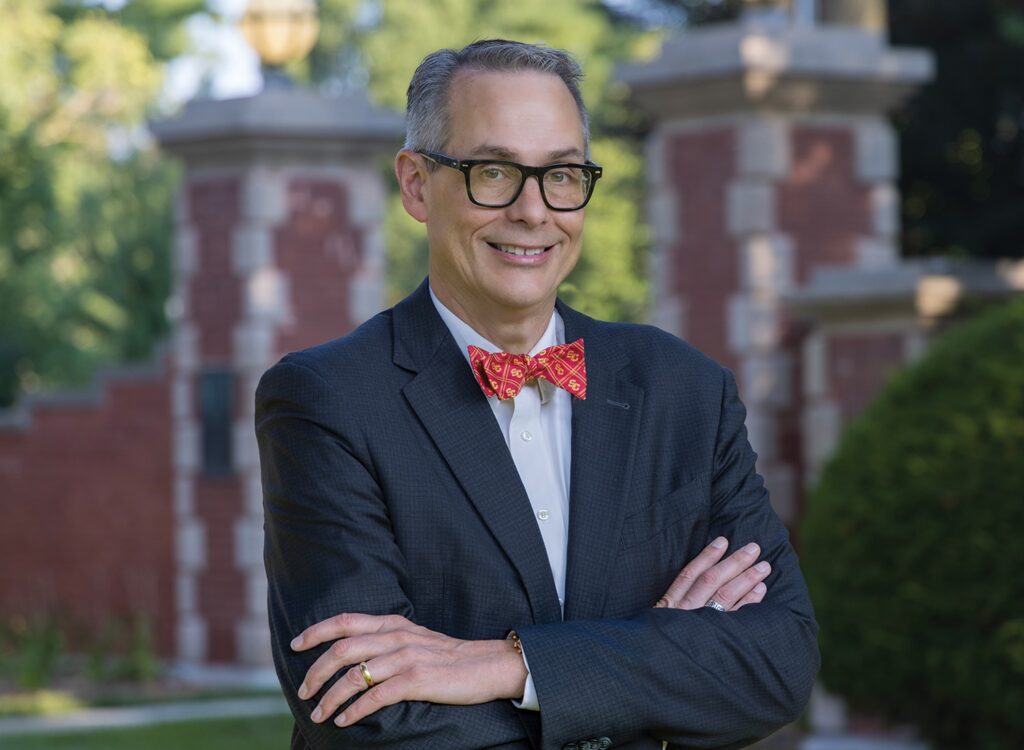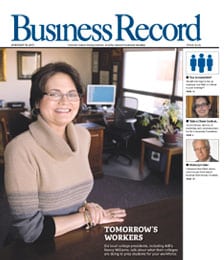Home builders encourage buyers to think green

Homeowners nationwide felt the sting of high energy prices this winter with the arrival of each month’s heating bill. Though many people reacted by turning down their thermostats and grabbing a sweater, many in the home building industry expect the more lasting effect will be a push toward energy-efficient homes.
“It’s strictly market driven,” said Bill McAnally, coordinator of the carpentry program at Iowa Central Community College, which has implemented campus-wide energy-efficiency measures for more than a decade. “The only time you get attention (to energy efficiency) is when gas prices go up.”
This time around, he believes the attention given to energy efficiency to stick. Interest in green building technology in the residential market has increased significantly in the last year, he said, and analysts expect it to continue to climb this year. “So hopefully it’s finally taking off,” he said.
Though green building techniques have been slower to take hold on the residential side of the construction business than in commercial building, Lynnae Hentzen, executive director of the Center on Sustainable Communities, said many builders are leading the current charge toward efficiency and sustainability.
The most popular approach by home builders such as Regency Homes and Hubbell Homes has been efforts to meet Energy Star standards set out by the U.S. Environmental Protection Agency and the U.S. Department of Energy. For a home to be Energy Star certified, it must include a variety of energy-efficient products and systems, all intended to make the house 30 percent more efficient than a traditional house of the same size. Some builders and homeowners also benefit from utility company rebates when houses are Energy Star certified.
“A sizable percent (of Regency’s home buyers) say that was one of their deciding factors,” said Bob Seeley, director of sales and marketing for Regency Homes.
Though meeting Energy Star guidelines alone produce significant savings on utility costs, they are not the end-all for builders and buyers. There is a rising demand for improved insulation and building technologies, as well as highly efficient heating and cooling systems. Though home buyers may experience higher upfront costs, those added costs are eventually paid back through lower utility bills.
“You want (home buyers) who know what they want and are going to stay in their house for a while,” said Brad Stanbrough, president of Stanbrough Home Builders L.C. “After a while, it’s paid for. They spend money upfront, but it’s a better house.”
Geothermal heating and cooling systems, perhaps the biggest trend in energy-efficient home building, cost about twice as much as traditional heating and air conditioning systems, but homeowners can expect to see a 50 percent reduction in their monthly utility costs, according to Rex Sponsler, new construction representative for Bell Bros. Heating and Cooling. Tollakson said homeowners should expect a seven- to eight-year payback period on those systems through utility savings.
Sponsler has seen a 15 to 20 percent increase in customer inquiries related to geothermal systems since last year at this time, and more Stanbrough customers are beginning to entertain the idea of including geothermal systems in their new homes. But Regency’s Seeley said it is still a fairly novel idea in Central Iowa. “We tend to hear more about it upfront than we actually see people using it,” said Seeley, who attributes that to the significant initial cost.
Hubbell is promoting geothermal systems in its new Glynn Village development in Waukee. Tollaksen said the 285-acre conservation community puts Hubbell on the cutting edge of energy-efficient home building. Each showcase home will include a geothermal system, which will be an option on all built-to-order homes in Glynn Village. Hubbell included geothermal heating and cooling in its Creekside brownstones in Ankeny, and company spokeswoman Rachel Flint said residents’ monthly heating and cooling bills have been as low as $30 to $40.
Iowa Central Community College operated the largest geothermal grid in the state of Iowa last year, McAnally said, with eight of its 12 residence halls equipped with the systems. At last check, the college was saving more than $160,000 a year in utility costs, he said, “and that was a couple of residence halls ago.”
Tollakson himself has experienced “pretty substantial” cost savings on his 6,000-square-foot home. Tollakson told his neighbor, who he estimates has a 5,000-square-foot house, the cost of his monthly utility bill, and “he said he’d trade me in a nanosecond.” Tollakson’s utility bill was about half that of his neighbor’s. A zoning system, which allows various areas of the house to be set at different temperatures during different times of the day, has also contributed to reduced heating and cooling costs.
Fiberglass insulation, which Stanbrough compares to “putting cotton candy in your walls,” is being replaced by improved fill technologies, particularly cellulose insulation. “It’s just a hair more expensive (than fiberglass) and twice the insulation,” he said. Foam insulation is a slightly more expensive alternative. Stanbrough Home Builders also builds all of its homes with 2-foot-by-6-foot exterior walls to create an “envelope” that is 56 percent larger than traditional homes, leaving that much more space for added insulation.
Iowa Central, which has promoted energy-efficient building for more than 15 years, is in the midst of a home building project that could serve as an example of energy efficiency statewide. A team consisting of Iowa Central carpentry students, the Iowa Department of Natural Resources, architects from RDG Planning & Design and architecture students from Iowa State University are building an energy-efficient house, which they hope will be the most energy-efficient house in Iowa. McAnally believes the house will be 64 percent more efficient than a traditional house of its size.
The team is using advanced framing methods, including structurally insulated panels and a foundation made of insulated concrete forms. The geothermal house includes greater amounts of insulation and is oriented to the south to maximize solar heating.
One goal of the project is “to show you can do a highly energy-efficient home for the same cost,” McAnally said. He estimates the market value of the 1,800-square-foot house to be about $180,000.
Energy conservation proponents expect efforts such as these will continue the progress toward affordable energy efficiency. But Hentzen hopes consumers couple those efforts with a push toward building smaller.
“You can shave off the cost (of the house) by not building as big and making your space just as livable if not more livable, and you’ll have money to spend on other (energy-efficient) aspects,” she said. “We’re still in the mode that bigger is better, and I think that will change in the future.”







